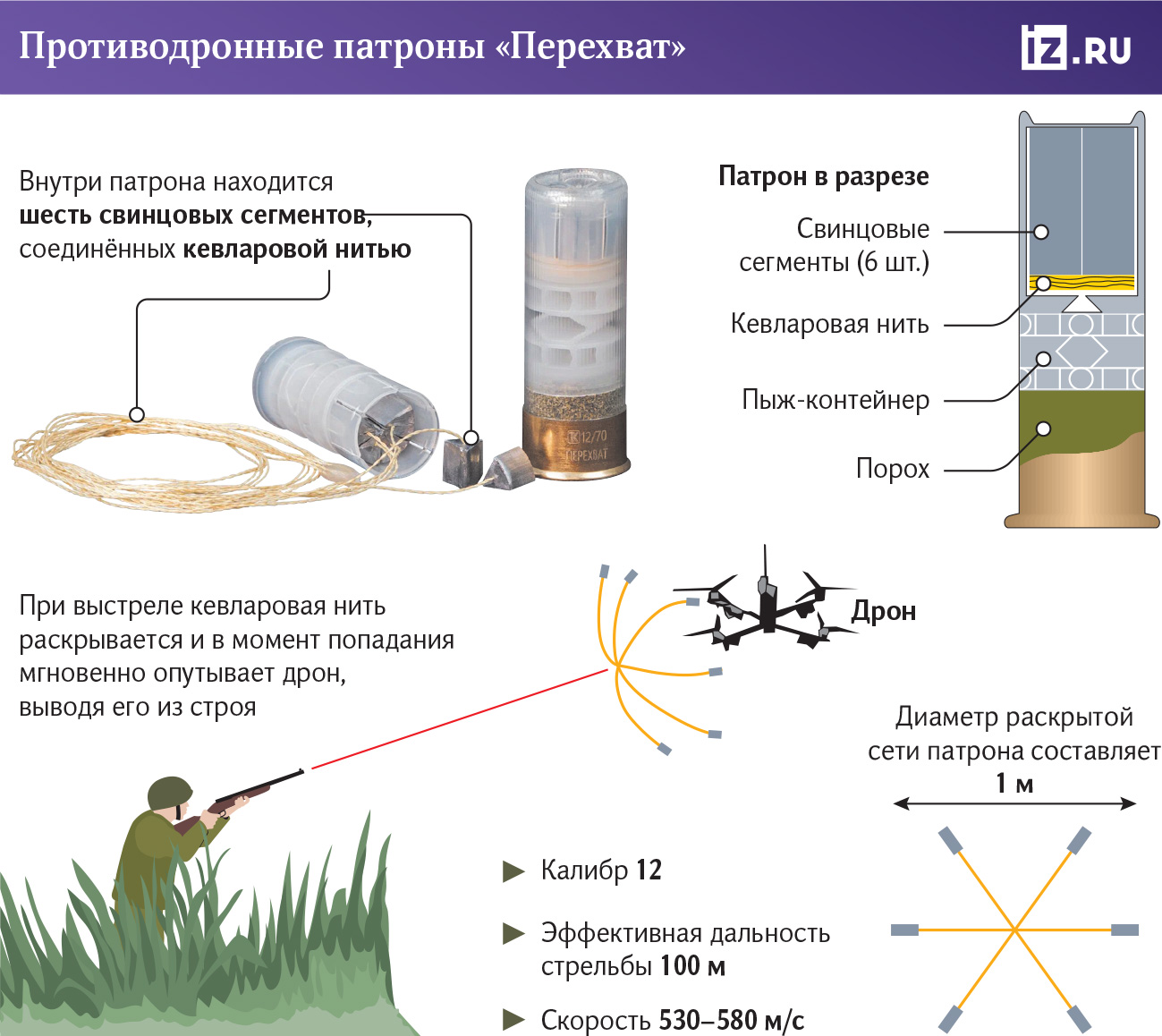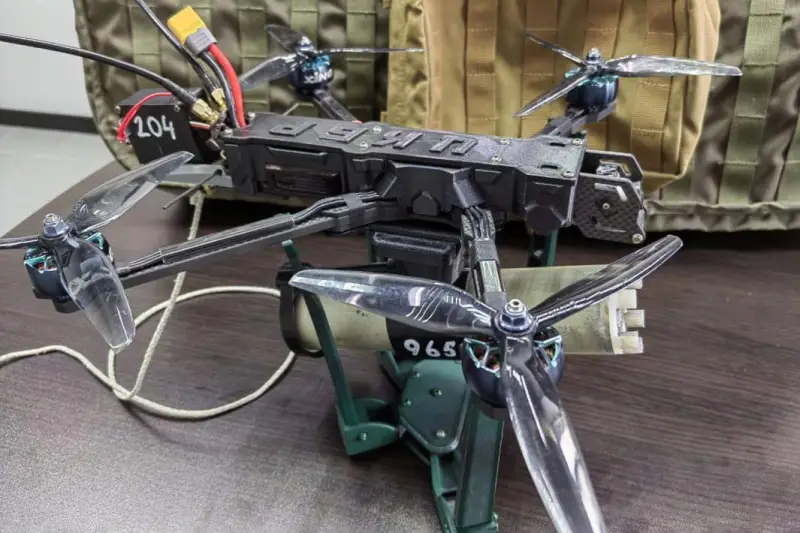In a move aimed at improving its capabilities in combatting small unmanned aerial vehicles (UAVs), Russia has developed specialized anti-drone cartridges, with initial batches already dispatched to forces engaged in the ongoing conflict in Ukraine.
The ammunition, developed by Closed Joint Stock Company Tekhkrim, has been tailored to increase effectiveness in countering the threat posed by drones in warfare.
Oleg Kuzmenko, the director of CJSC Tekhkrim, told Izvestia that the first batches of ammunition, dubbed the 12/70 “Intercept” and 12/76 KS, have been dispatched to Russian forces engaged in what Moscow terms a “Special Military Operation” in Ukraine.
The cartridges are currently undergoing rigorous testing in the conflict zone. They are specifically tailored for firing from 12-gauge smoothbore guns, which are widely used in Russia. Popular models include the “Saiga-12,” “Vepr-12,” and MP-155, along with other variants like single-barrel and double-barreled models.
Shedding light on the Intercept cartridge’s design, Kuzmenko elaborated that it features six lead segments interconnected by Kevlar thread. Upon firing, the structure unfurls approximately 15 to 20 meters from the muzzle, creating a destruction field of up to one meter in diameter.

Explaining the technical details, Kuzmenko revealed that the cartridge’s design is based on knitted buckshot, traditionally used in hunting scenarios. However, in the Intercept, the segments are intricately linked to ensure a continuous field of destruction, minimizing gaps between striking elements, which could impede the drone’s neutralization.
Another innovation, the 12/76 KS cartridge, builds upon the “Fat Goose” hunting cartridge, incorporating the renowned Eley ring to enhance accuracy and extend the firing range to 75 meters.
Kuzmenko stated that when loaded with a No 3 shot, considered highly efficient against drones, the 12/76 KS achieves a precise equilibrium between shot size and weight, maximizing impact while maintaining accuracy intact.
However, Kuzmenko noted that the efficacy of employing the cartridge at longer ranges hinges on numerous other variables, such as the shooter’s proficiency and practical expertise.
He highlighted that ongoing testing of the new cartridge aims to explore avenues for enhancing its design. “We tested it on FPV drones,” he said. “The results were good. Now we are waiting for the results of practical application in order to draw conclusions about its effectiveness, the need for this or that improvement.”
Russia’s Efforts To Develop Anti-Drone Technology
Drones have emerged as cost-effective assets on the battlefield, capable of executing diverse tasks to counter hostile forces. In response, Russia has intensified its efforts to thwart drones by developing anti-drone systems.
One such innovation involves modifying the Joker-10 FPV drone, which is equipped to intercept enemy UAVs. Special tubes affixed to the Joker release decoy thermal targets filled with explosives and projectiles, which, upon activation, shoot down approaching enemy drones.
Additionally, the modified drone can resort to ramming as a last resort, enhancing its effectiveness in combat scenarios.
Developers envision the FPV-air defense crew, armed with ground equipment and these modified drones, as a promising addition to intercepting air targets on defense lines.
In tandem, the mass production of the “Gran” electronic intelligence complex is underway. This system effectively counters drones by monitoring their frequencies and relaying information to electronic warfare units. This represents just a fraction of the new equipment being tested to combat enemy drones.

Meanwhile, the introduction of new cartridges promises significant battlefield advantages. Russian experts anticipate these cartridges to effectively engage small drones, requiring minimal training for frontline fighters.
Colonel Alexander Perendzhiev of the Plekhanov Russian University of Economics lauded this development, highlighting its cost-effectiveness and immediate applicability, which enhances fighter survival rates.
Chinese UAVs ‘Hover’ Over The US Despite Federal Block; Cheap DJI Drones ‘Lure’ Security Agencies
He highlighted the innovation’s effectiveness, underscoring its role in ongoing warfare dynamics. He expressed optimism for further advancements in the field.
The expert remarked that these cartridges could also find utility among civilians residing in border areas, particularly in instances where adversaries employ lightweight drones to target civilian populations and infrastructure.
“In rural areas, there are many people who have guns; they know how to use them. Such ammunition will help them to establish the defense of their settlement or home,” he explained.
The effectiveness of these new cartridges in actual battlefield conditions remains to be seen. Nevertheless, the development underscores Russia’s ongoing efforts to innovate and devise new strategies for neutralizing the drone threat.
- Contact the author at ashishmichel(at)gmail.com
- Follow EurAsian Times on Google News




